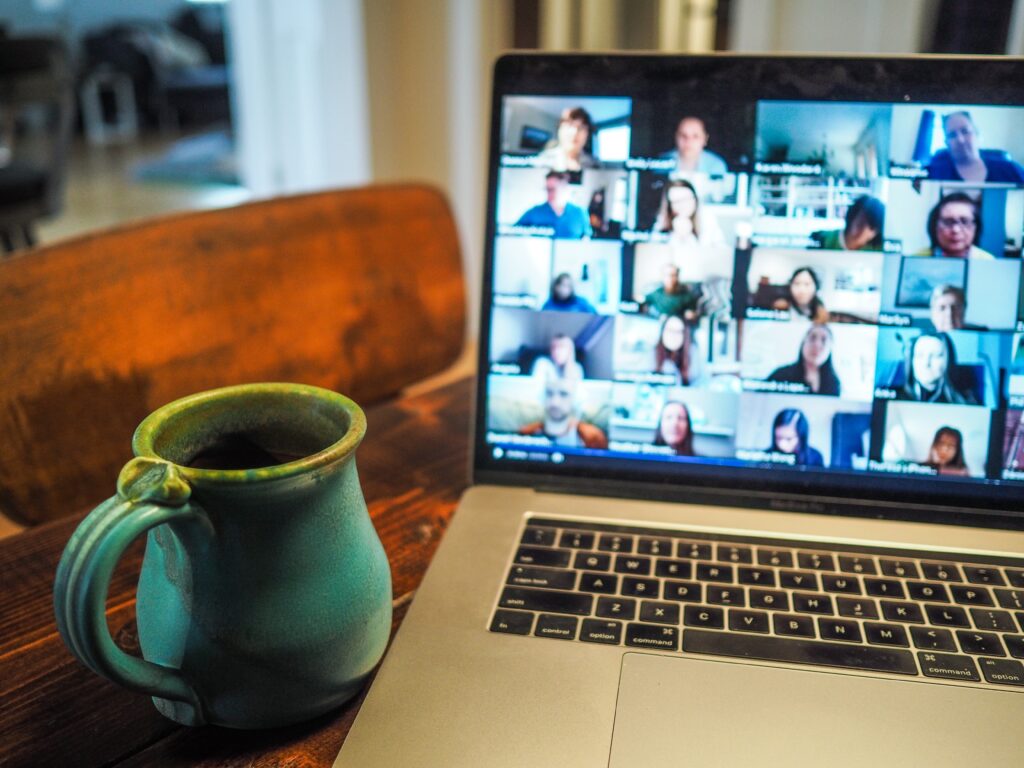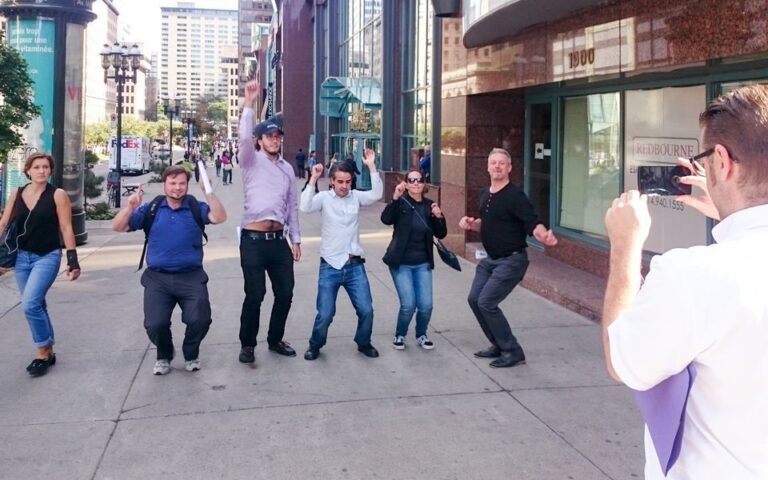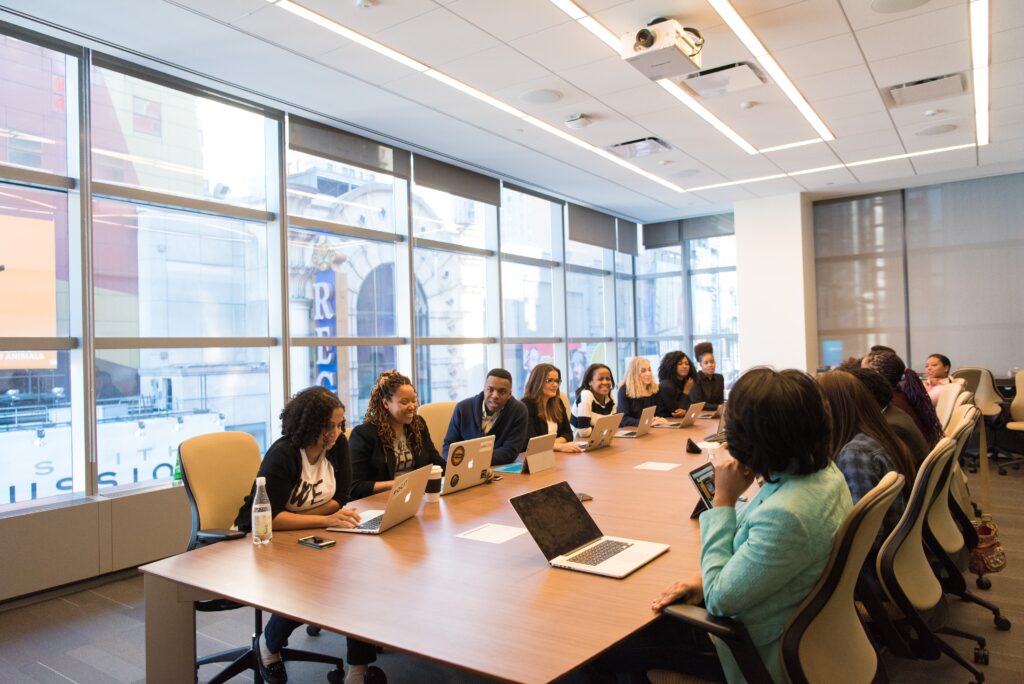The Top Trends in Team Building and Training for 2021

After an unprecedented year, our team of experts weighs in with their insights on the trends in team building as well as training and development that you can expect to see in 2021.
Are you looking for the latest employee team building and training trends? Check out our updated blog post: The Top Trends in Team Building and Training for 2022.
There’s no doubt that 2020 caught most organizations, leaders, and professionals off guard. It was an unprecedented year filled with unexpected challenges, and few organizations in the world were immune to their effects.
So, as we do each year, we connected with our team of in-house experts to analyze customer data, crunch numbers, review industry indicators, and assess how the challenges from 2020 will impact the trends in team building and training and development as 2021 gets underway.
In this article, you’ll find insights from:
- Murray Seward, CEO at Outback Team Building and Training
- Jules Joyce, COO at Outback Team Building and Training
- Lyndon Friesen, Lead Facilitator at Ignitor Training, skill development coach, and training and development expert at Outback Team Building & Training
Keep reading to learn more about the trends you can expect to see in 2021.
Part One: Team Building Trends for 2021- 2021 Team Building Trend #1: New and Innovative Approaches to Remote Team Building
- 2021 Team Building Trend #2: Cross-Departmental Team Building
- 2021 Team Building Trend #3: Changes to Recruitment and Assessment of Potential New Hires
- 2021 Team Building Trend #4: CSR and Sustainability
- 2021 Team Building Trend #5: Budget Restrictions Changing the Way Team Building Happens
- Part Two: Training and Development Trends for 2021
Part One: Team Building Trends for 2021
Finding new ways to use team building to help connect remote teams and departments, assess potential new employees, and give back to those in need.

2021 Team Building Trend #1: New and Innovative Approaches to Remote Team Building
While remote work was steadily on the rise in 2020, the COVID-19 pandemic supercharged it. And as the pandemic continues into 2021—and businesses worldwide contend with the inevitable long-term implications of it—you can expect to see an increased demand for new and innovative approaches to remote team building.
“This remote employment movement is here to stay,” says Murray Seward, CEO of Outback Team Building and Training. “It’s going to stay in place, but as things move back towards normalcy, we’re going to see a hybrid version of it emerging, most likely in the form of shiftwork—for example, some teammates in the office part time or on certain days.”
And it’s not only the pandemic that’s fueling the rise of remote work. The increase in decentralization of workforces also means that organizations aren’t bound by geographical borders when it comes to recruiting new talent. You can expect for this to impact the way organizations conduct team building initiatives in 2021 and beyond.
“These changes put a focus on continuing to design virtual team building events that prioritize convenience,” explains Seward. “Team building is going to need to be flexible enough that it can be done whenever and however it’s convenient for every member of an organization—like people in different cities and time zones.”
He adds, “At Outback, we’ve already put a heavy emphasis on getting creative with how we can run team building events in different time zones and in finding ways to build events so that people can attend when it’s convenient for them.”
If you’re interested in virtual team building activities, you might like:
- Virtual Code Break: With this high-energy cerebral team building game, your remote employees will split into virtual teams and compete against each other as they work to solve a series of puzzles, riddles, and trivia questions. They’ll need to communicate effectively and work collaboratively as they race against the clock collecting points if they want to be the winning team.
- Virtual Clue Murder Mystery: Using video conferencing software alongside Outback’s proprietary app, your group will split into teams, examine clues, review case files, and channel their inner detectives as they race against the clock to solve the mystery of who had the means, motive, and opportunity to murder Neil Davidson.
- Virtual Game Show Extravaganza: In this virtual activity, teams will work collaboratively to answer trivia questions with topics ranging from pop culture to sports, world history, and beyond. Teams will earn points for each correct answer. Whichever team has the most points when time runs out will be named the winner!
2021 Team Building Trend #2: Cross-Departmental Team Building

Another significant team building trend we’re seeing for 2021 is an increased desire for cross-departmental and company-wide activities.
“In the past, team building would typically be individual teams,” says Seward. “So, for instance, a company’s digital marketing team would contact us to facilitate an event for them. But with entire organizations working remotely now, employees lack the in-person interactions with colleagues from across the company that they would typically have when working in the office.”
He continues, “As a result, we’re now seeing the need to not only create bonding opportunities for micro teams but also the need to make sure that everyone is aware of everyone else. We’re starting to see an increased appetite for cross-departmental and even company-wide team building.”
One of the main reasons why this is important is to ensure that a company’s culture is maintained, even in the face of significantly decreased (if not nonexistent) in-person facetime.
“The problem is that companies are still running on the culture they’ve built in their office,” explains Seward. “But as people spend less and less time together in person, maintaining that company culture they’ve worked so hard to build will be a real challenge for them to overcome unless they take proactive steps.”
He adds, “In past, companies used to do this with things like holiday parties where everyone was able to mingle and connect. That’s where stories were created. But with the rise of remote work, there’s no vehicle for that anymore. Creating those stories and memories together, having that laughter and that banter, it’s so important to company culture. Remote communication can be so impersonal, and it’s so important to work towards making it more personal.”
But this issue doesn’t just apply to relationships between teammates and colleagues. It’s also going to make things more challenging for leaders.
“You also need to consider leadership,” says Seward. “As a leader, it’s going to be hard for you to build strong, trusting relationships with employees when you work remotely and don’t have the chance to connect with them personally, face-to-face. That’s why it’s going to be critical to use virtual team building to build culture not just within micro teams but across macro teams as well.”
2021 Team Building Trend #3: Changes to Recruitment and Assessment of Potential New Hires

Another byproduct of the increase in remote work is that the process of recruiting and assessing potential new hires has become significantly more complex.
“Finding the right people is more complicated now than it was a year ago,” says Seward. “if everyone’s working remotely, how are you going to get a feel for somebody who you’re considering hiring?”
He continues, “Hiring is already tough and it’s only going to get harder. It was challenging enough in person, and now you have to consider the fact that interviewing remotely means you lose those vital cues you get from an in-person interaction.”
But while this process has become more challenging, Seward is quick to point out that it also presents important opportunities for organizations.
“On the other hand, this can be a good thing,” explains Seward. “Remote employment means you have a much broader talent pool to choose from. Organizations won’t necessarily be limited by geographical borders, meaning they’ll be able to enlist an incredible candidate, even if they live in a different city or state. It’s just going to be important to ensure you have your scoring mechanisms in place that help you clearly discern a great candidate in a remote setting.”
If you’d like to learn more about this topic, check out our resource on the subject: Hiring During a Crisis: Tips for Recruiting, Interviewing, and Onboarding Employees During COVID-19.
2021 Team Building Trend #4: CSR and Sustainability

As the world begins returning towards normalcy, you can expect to see a boost in CSR and sustainability-focused team building activities, according to Jules Joyce, COO at Outback Team Building and Training.
“I think we’re going to see organizations looking at team building activities focused on giving back,” says Joyce. “For example, they’ll look to do team building activities that focus on those who were hit hard by the pandemic, those who have been champions throughout, like frontline workers, as well as activities that help families who are now finding themselves homeschooling children or caring for a family member.”
But this will also extend to employees, as well.
“There’s been a lot of stress in employees’ home lives,” adds Joyce. “It’s been an extremely stressful year. So, how can organizations go about making that better?”
At Outback Team Building and Training, we offer a wide array of charitable team building activities, including:
- School Supply Scramble: Class is in session with this philanthropic activity where your team will be tested by a variety of education-themed challenges. Each challenge correctly completed will earn your team school supplies which you’ll use to fill as many backpacks as possible in the time allotted. All backpacks will be donated to charity.
- Bookwork Builders: Your team can help spell success for kids in your community by supporting early childhood reading with Bookworm Builders. You’ll compete in challenges to earn materials that you can use to build and decorate bookshelves which will be donated to kids in need.
If you’d like to see a charitable team building event in action, check out our Case Study: How Team Building Helped Microsoft Employees Donate a Truckload of Food.
2021 Team Building Trend #5: Budget Restrictions Changing the Way Team Building Happens

The COVID-19 pandemic has taken a serious toll on the bottom line of business across the world. And in many cases, this will mean reduced budgets for company culture and team building initiatives in 2021.
“Budgets are going to change the way team building looks,” explains Joyce. “I believe we’ll see less of organizations sending large groups to popular conference destinations. Instead, cost-effective virtual team building activities will continue to gain popularity in 2021. And I also see more local in-person activities taking place rather than out-of-town activities, if and when companies are able to host gatherings again.”
She adds, “I believe that people will want in-person activities but that companies may not have the budgets to accommodate things like travel or expense-heavy company parties. So, I anticipate more events happening in and around offices.”
The good news is that in-person team building activities don’t have to be expensive. Outback offers a ton of cost-conscious virtually hosted or self-hosted team building activities, including:
- Team Pursuit: In this high-energy team building activity packed with engaging mental, physical, skill, and mystery challenges, you and your team will have the chance to re-energize, use creative problem solving, and have fun as a group as you compete to earn points in hopes of being crowned the winners.
- Charity Bike Buildathon: The perfect balance of business lessons and philanthropy, Charity Bike Buildathon will bring your team together to collaborate with their colleagues, bond as a group, exercise creativity, put their business sense to work, and give back to their community. You and your colleagues will build and decorate bicycles for kids in need and exercise your business sense by designing and presenting ad campaigns.
If this sounds like something you might be interested in, take a look at this case study to see how a virtually hosted team building activity helped our customer to build stronger rapports among their team members during a challenging project.
Part Two: Training and Development Trends for 2021
Focusing on deeper levels of communication and prioritizing the importance of transformative diversity in the workplace

2021 Training and Development Trend #1: Stronger Focus on In-Depth Communication
Communication has always been a hot-button topic for organizations. And Lyndon Friesen, Lead Facilitator at Ignitor Training, skill development coach, and training and development expert at Outback Team Building & Training, sees this trend continuing—but with one important caveat.
As 2021 gets underway, organizations will likely find themselves needing to focus on improving their communication skills as they pertain to in-depth—and sometimes challenging—conversations.
“The term ‘communication’ will embody something a little deeper in 2021,” says Friesen. “It’s going to be less about how to write an email and run a meeting, and more about how we understand differences in how we communicate, contribute, and generate results.”
The first step in improving this kind of communication is to focus on helping colleagues to develop a deeper understanding of one another in order to work more effectively together.
“Organizations will need to help their people understand the differences in a team dynamic,” explains Friesen. “Then, they’ll need to learn to practically apply that to a situation which is team-facing.”
He continues, “One of the best ways to do this is to start with an assessment tool, such as our Discovering Workstyles with DiSC training program, that highlights the differences in how we communicate and how, in a subconscious way, these differences can create judgement.”
By its nature, working remotely can create communication challenges in the best of times. And this is something that Friesen has seen emerging more and more since the onset of the pandemic.
“We’re in a strange moment in time,” says Friesen. “The faster the world around us is moving, the less time we have to understand each other. And then you couple that with a virtual world? Good luck. Unless we understand each other fully, we’re going to judge each other rather than learning to understand each other’s differences—and how those differences can actually make for a stronger team.”
When miscommunication leads to judgement, one of the most common and problematic byproducts is conflict.
“I frequently see colleagues and teams experiencing similar types of communication-related conflict,” says Friesen. “For instance, people failing to give each other the benefit of the doubt. That kind of energy is more common than not.”
Friesen elaborates, “Consider a scenario where somebody doesn’t respond to our email. We often automatically assume they’re intentionally ignoring us. Why? Because our human default is to assume the negative–when our brains have a vacuum of information, we can’t handle that vacuum, so we’re going to create a made-up truth. Most of us create a made-up negative truth and, furthermore, if we’re not great at conflict, we’re not even going to ask people about it. We’re just going to assume, and then suddenly we’ve got conflict that’s unresolved and it’s getting worse, not better.”
The solution to this challenge comes in the form of finding ways to handle conflict, implement a performance culture, and instill peer accountability.
At Outback Team Building and Training, we offer a number of training programs designed to support these exact goals, including:
- Emotional Intelligence – It’s critical that employees are able to pick up on subtle cues and respond appropriately in order to mitigate the assumption of negative intent – especially when working remotely. With a program like Emotional Intelligence, your team can learn to increase self-awareness, develop a greater sense of empathy, and acquire better social skills for leadership.
- Positive Team Dynamics – As much as we’d love to believe that hiring a group of A-Players will result in a positive team dynamic, that’s just not the reality. Positive team dynamics need to be honed and developed, especially in the face of evolving employment scenarios. This program can help your team to become aligned, build trust even when working remotely, and work more collaboratively together.
- Discovering Workstyles with DiSC – Helping your team to get a better understanding of one another can be powerful tool in helping them work more effectively together, whether in the same office or remotely. With this program, your team will learn about how they measure up against four main profiles: Dominance; Influence; Steadiness; and Conscientiousness. Based on this, they’ll learn how what their profiles might indicate about themselves and their colleagues as well as understand how best to work with people based on their DiSC profiles.
“I see organizations wanting these types of programs and assessments more and more,” says Friesen. “Because once we’re able to objectively understand each other, we’re able to work more closely together and achieve even greater things.”
2021 Training and Development Trend #2: DEI – Diversity, Equality, and Inclusion

The importance of communication is extending beyond strictly business-focused dialogue and expanding to encompass challenging conversations as well.
“The idea of DEI is extremely important for organizations today,” says Friesen. “This term refers to Diversity, Equality, and Inclusion, and it encompasses topics like sexism, gender, culture, background, religion.”
This is an especially important conversation given current affairs in the world in 2021.
“There are a lot of challenging factors to consider today,” says Friesen. “Given the race tension in America, given the fact that we’re going to a Democratic government versus a Republican government, these conversations are more important than they’ve ever been.”
He continues, “There’s a huge appetite for organizations to not just write policy about DEI but to focus on being able to be honest and open in these dialogues while ensuring everyone feels safe in having them.”
This is an idea that Friesen refers to as transformational DEI as opposed to transactional DEI.
“There’s an important distinction here,” explains Friesen. “Transactional DEI refers to simply writing a policy and attaching metrics to it. For example, an organization saying that its DEI policy is to appoint one woman to the executive committee and then placing somebody into that role and checking a box. Transformational DEI, on the other hand, refers to organizations actually becoming equipped with the tools to have real, sensitive conversations that help people learn and grow –in an honest and safe way.”
He adds, “The challenge with ‘honest’ and ‘safe’ is that these things are often fighting one another.”
In order for organizations to fully embrace and adopt transformational DEI, they first need to embrace one undeniable reality of being human.
“The truth is that we all have biases,” says Friesen. “It doesn’t matter who we are. But when we can’t have safe and honest conversations, we just stew in our biases. Because if I don’t believe it’s safe to talk about my biases in an honest and respectful way for the purpose of learning and understanding, I’ll never have the opportunity to address or change them.”
That’s why the concepts of “safe” and “honest” are often fighting one another: people are generally hesitant to share a bias they have in fear that they’ll face anger or backlash for expressing it.
But by facilitating a professional environment where people can express their biases in an honest and respectful way with a genuine goal of gaining a deeper understanding of other people, organizations can create a stronger and more unified company culture.
“Transformation doesn’t happen transactionally,” says Friesen. “It doesn’t happen from saying we’re going to hire X type of X people. The real change comes from conversation. From learning about each other and coming to understand one another. If we can be respected for having the courage to address a bias that you have and you can be respected for doing so, then suddenly you’ve become a little bit closer with colleagues against whom you might’ve had a bias.”
He adds, “Organizations generally don’t want to take this on internally because they feel they’re at risk. So, it’s much easier to have an impartial third party come in and support organizations on this front.”
What do you anticipate as the biggest trends that will be taking place in your industry in 2021? Let us know in the comments section below.
Learn More About What’s New in 2021
If you’ve got questions about how you can equip your organization for success in 2021, reach out to an Employee Engagement Consultant for even more insight on team building and training solutions.



